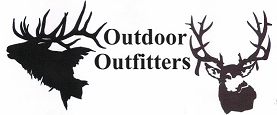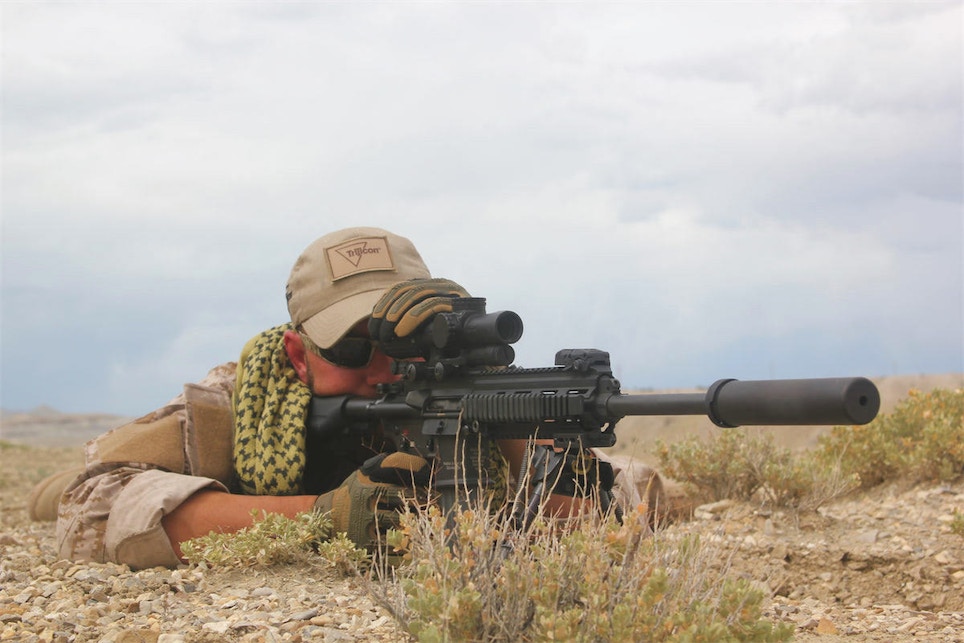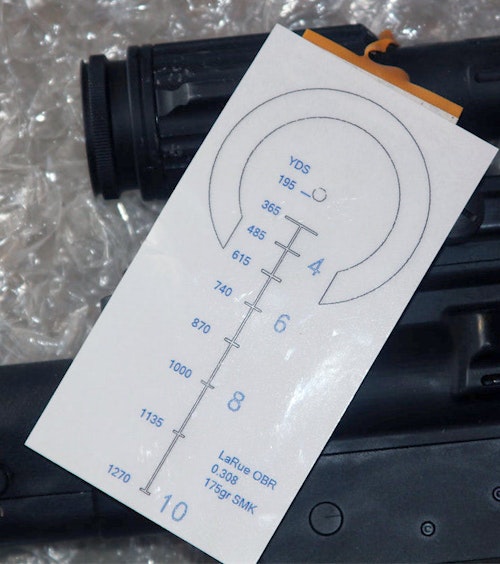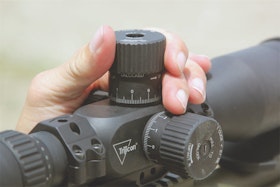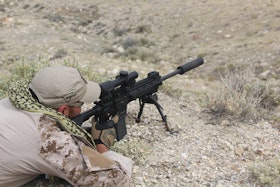10 Steps to Shooting Long Range
Mastering the art of long-range shooting takes practice and just the right equipment.
Watch cable TV hunting shows and YouTube channels, and you see guys taking shots at both targets and game seemingly halfway around the world. It’s all over social media, too. At the end of the day, the uninitiated might come away thinking long-range shooting is pretty easy. All you have to do is spend a bunch of money on the right equipment and presto! You’re sniper ready.
Nothing could be further from the truth.
Though I have been a rifle shooter most of my life, been to long-range shooting schools and spent a fair amount of time with both military snipers and very serious gong-ringers who can hit a 36 x 36-inch steel plate at 2,000 yards on a regular basis, I am no expert. One time I did win a little informal “Shoot & Scoot” competition with some SOF guys with lots of combat experience and a couple other outdoor writers, ringing gongs at unmarked distances between 100 and 1,000 yards, but that was my best day ever. Truth be told, for me, shooting at game — not inanimate objects — past about 400 yards makes me very uncomfortable. It’s serious business.
What long-range shooting practice will do for riflemen is make them more consistent at all distances — near to far. Long-range shooting magnifies every little flaw in shooting technique, exposes inconsistencies in rifle/load combinations, reveals mistakes in wind doping and range estimation. When hunting, you’re not trying to hit a man-size steel plate “someplace,” but a small area the size of your target animal’s vitals.
When your customers start asking about long-range gear, you need to understand what they need and help them find the right setup or they’ll come away disappointed. Just as important, they need the knowledge, skill and experience to consistently — and ethically — make long-range shots in the field. Offer a good overview of these 10 steps and they’ll have a good head start when they hit the range.
Step No. 1/The Foundation … It all starts with a rifle/load combination that consistently shoots tight groups at all distances — not just 100 yards. While that’s possible with today’s excellent factory ammo, most long rangers are handloaders. Use bullets designed for long-range accuracy, which means longer and heavier for caliber (Example: 190- or 200-grain .30-caliber bullets instead of 150- or 165-grainers in a .300 Win. Mag.). As one sniper told me long ago, “In this game, speed does not kill, precision does. A slow hit beats a fast miss every time.”
Step No. 2/A Perfect Fit … The rifle must fit the shooter exactly. Direct them toward adjustable stocks, auxiliary cheek pieces and butt plate extensions for adjusting length of pull. The scope must be positioned until the shooter can aim through it perfectly without moving their head off the stock. Everything must fit like a glove.
Step No. 3/The Riflescope … You get what you pay for, and your customers should understand this is where they need to spend some real money. Optical quality is paramount, as is a scope with precise windage/elevation adjustments, parallax adjustment and an eyepiece that can be focused to shooter’s eyesight, so the reticle is crystal clear.
A key question is: What is best, a first or second focal plane reticle? Those who shoot almost exclusively at long range often prefer a reticle in the first focal plane, because the reticle size adjusts with the magnification level so the measurements are always accurate — a mil at 5X is always a mil at 25X. With a second focal plane scope, the reticle is only valid at one point across the entire range of magnification — usually the highest magnification level. At other levels, it requires a mental calculation of the variance based on the magnification setting at the time of the shot, which can be an issue for people who shoot at a lot of different magnification levels. In a second focal plane scope, the reticle will appear to be the same size across the magnification range.
Step No. 4/Parallax Adjustment … To properly adjust this very important and oft-misunderstood adjustment, sight-in at the chosen distance, turn the knob until everything is blurry and then bring it back until it is in focus. Also remember this is not a focus knob, so they should move their head in a swaying motion while looking through the eyepiece and make sure the reticle is not moving. When this occurs, parallax is correct for that distance. If parallax is not correct and their cheek is not consistently placed on the stock or their head position behind the scope is inconsistent, point of aim might seem accurate but the point of impact could be off downrange. This might not be noticeable at shorter ranges, but everything intensifies at extreme ranges.
Step No. 5/Body Position … For extreme long-range shooting, prone is by far the most accurate shooting position. When going prone, it is important to get your body parallel to the rifle. That might seem a bit unnatural at first, but it’s important. Why? “If your shoulder is canted to the side, the recoil can ‘roll’ you to the side, which will take you off target for both follow-up shots and/or make it impossible to see your hits through the scope,” says Tom Maciak, engineering technical leader at Trijicon, and a very serious long-range shooter. “I always tell people they need to get their butt behind the rifle. Here’s how to tell whether you are in the proper position. Get into position, take a breath, close your eyes and relax — which will help your body relax — then open your eyes. If your body has moved, you will not be on target.” And always rest both the rifle forearm, as well as both the rear stock and back elbow, whatever shooting position you choose.
Regarding a rear rest, make sure your customers have sandbag or other suitable support. There are “squeeze” bags made for just this purpose, so the shooter can change the elevation of their shot by squeezing or relaxing the rear rest with their non-trigger hand. Remind them that their trigger hand is only for fine tuning left and right and squeezing the trigger. Using the other hand and a rear rest to adjust up and down is much more accurate shooter. With a tripod or shooting sticks, the farthest leg should always be positioned between the shooter and their target. This will allow them to lean into the rifle for proper form, and the sticks will provide maximum stability. When shooting off any support stick (monopod, bipod or tripod) grip the forearm of the stock and the shooting stick(s) with your forward hand and pull the stock down into the stick(s) for the most stability.
Step No. 6/Even Steven … It is critical that the horizontal reticle is horizontal to the imaginary horizon, even if when set up on a hill. If the rifle is canted, shots will hit left or right, depending on how the rifle is positioned.
Step No. 7/Turret Scopes … Very popular these days are scopes with turrets that can be adjusted to dial in the distance, then place the crosshairs on the target regardless of the range. “Before heading afield, it’s important you develop a ‘dope sheet’ for your rifle/load combination,” Maciak says. “To do that, first chronograph your load, then use an online ballistics calculator to give you the numbers. Be sure to plug in anticipated environmental conditions — altitude, humidity, ambient temperature and so on — which you can do with a little online research before you travel to wherever it is you will be hunting. When chronographing the load, take an average of five shots before running the online calculations. Without this your turret adjustment system will not work precisely.”
Step No. 8/Range It … It should go without saying that the shooter must know the exact range to their target to make the shot. Like riflescopes, rangefinders come in all price ranges, and when it comes to accurately measuring the range at extended distances, a rangefinder that can take a reading off a “soft” object such as a tree or brush is critical. Don’t let customers assume they’ll get accurate readings at the distances advertised by the manufacturer. Advise them to test their rangefinder the same time they test their loads so they know how it will all work together in the field.
Step No. 9/The Exhale … When you are behind the rifle your breathing and heartbeat create a rise and fall. The best shooters I know shoot at the bottom of the exhale — some, between heartbeats. At the bottom of the exhale, your body tends to be at its most relaxed state. Also, at the bottom of the exhale most of us have about three seconds to make the shot before our bodies become oxygen deprived, so there is plenty of time. Tell your customers that if they’re not ready by then, simply take another breath and start over.
Step No. 10/Follow Through … In all rifle shooting, a good follow through is important. How do you properly follow through? It’s simple. Squeeze, don’t slap, the trigger, and hold it through the shot as you attempt to watch the bullet hit the target through the scope.
